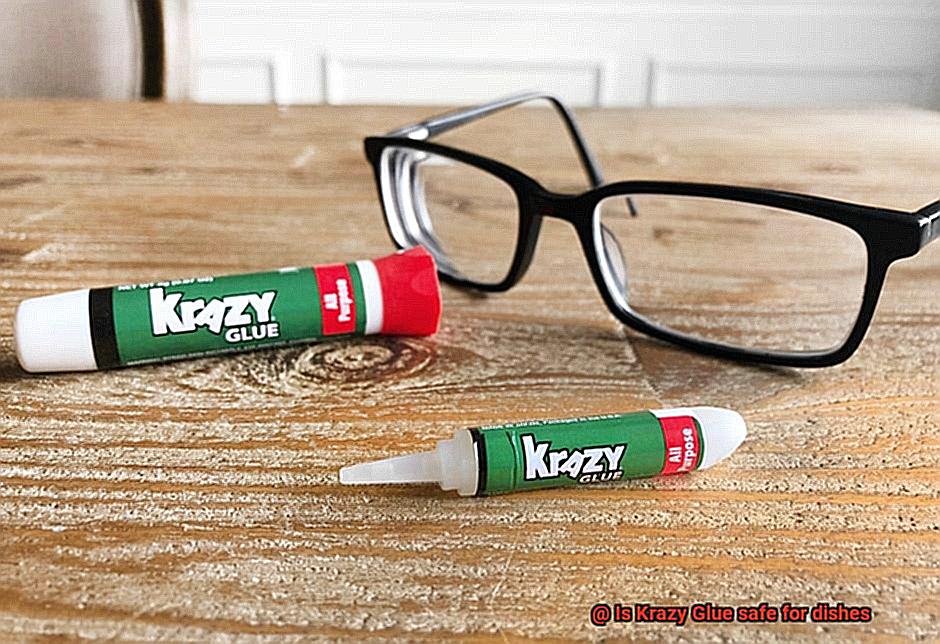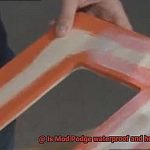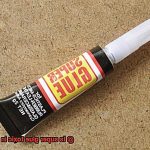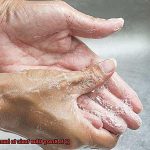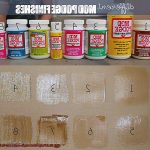Welcome to our blog post, where we embark on a thrilling quest to uncover the truth about whether Krazy Glue is a friend or foe to our precious dishes.
We’ve all been there – that heart-stopping moment when our favorite dish shatters into a million pieces, leaving us desperate for a solution. Enter Krazy Glue, the superhero of adhesives, with its legendary bonding power.
But here’s the real question that’s been bugging us all – can we trust this mighty glue to keep our dishes intact without any hidden dangers? In this article, we’re diving deep into the safety aspects, potential risks, and expert tips that’ll help you make an informed decision when it comes to rescuing your beloved tableware.
So get ready to stick around as we unravel the truth about Krazy Glue and dish safety.
What is Krazy Glue?
Contents
- 1 What is Krazy Glue?
- 2 Is Krazy Glue Safe for Dishes?
- 3 Factors to Consider when Using Krazy Glue on Dishes
- 4 Potential Risks of Using Krazy Glue on Dishes
- 5 Alternatives to Krazy Glue for Dish Repairs
- 6 How to Choose the Right Adhesive for Dish Repairs
- 7 Tips for Repairing Broken Dishes with Adhesive
- 8 Conclusion
Look no further than Krazy Glue. In this article, we will explore the fascinating world of this renowned adhesive, discussing its fast-acting bonding capabilities, versatility across materials, and important considerations when using it on dishes.
Fast-Acting Bonding Capabilities:
Krazy Glue is famous for its ability to form strong bonds in mere seconds. Upon contact with a surface, a chemical reaction called polymerization occurs, causing the glue to harden rapidly. This makes it incredibly useful for urgent repairs or projects that require immediate bonding.
Versatility Across Materials:
One of the standout features of Krazy Glue is its compatibility with a wide range of materials. Whether it’s wood, metal, plastic, or ceramics, this adhesive can bond various surfaces together with ease. From fixing a broken chair leg to reattaching small parts, Krazy Glue has got you covered.
Important Considerations for Dishes:
While Krazy Glue is an excellent choice for many repairs, it is not specifically designed or labeled for use on dishes. Caution must be exercised when considering its application on dishware. The adhesive contains chemicals that may not be safe for direct contact with food or prolonged exposure to heat.
To ensure the safety of your repaired dish and the quality of your meals, it is advisable to seek out food-safe adhesives specifically formulated for dishware repairs. These adhesives are made with non-toxic materials and can withstand high temperatures.
Is Krazy Glue Safe for Dishes?
Well, the answer isn’t as simple as a yes or no. Let’s delve into the world of Krazy Glue and its relationship with your beloved dinnerware.
Krazy Glue, crafted from the powerful cyanoacrylate, is generally safe for dishes. Its lightning-fast bonding abilities make it perfect for ceramics and glass. But hold on tight, because there are some important factors you need to consider before reaching for that shiny tube.
First and foremost, patience is key. Ensure that the glue is completely dry and cured before using the dish again. This typically takes around 24 hours. Trust me, you don’t want any chemicals leaching into your food or beverages. So let it cure and avoid any unwanted surprises.
Next, remember the golden rule: less is more. Use Krazy Glue sparingly and only on the areas that need fixing. Applying too much can lead to an unsavory taste or odor lingering on your dish. I don’t know about you, but I’d rather keep my pasta tasting like pasta, not industrial glue.
To be on the safe side, give your dish a thorough wash before and after applying Krazy Glue. This will remove any residue or contaminants that could compromise the bond or safety of the dish. No one wants to serve their loved ones with a side of unwanted surprises.
But here’s the deal – while Krazy Glue may be safe for most dishes, it’s not recommended for items in constant contact with food or beverages. In those cases, opt for food-safe adhesives specially designed for such purposes. After all, your health and safety should always take precedence.
Still unsure about whether Krazy Glue is safe for your particular dish? Don’t fret. Consult the manufacturer’s instructions or reach out to their customer service for expert guidance. They’ll have the know-how to provide you with accurate information about using their product on dishes.
Factors to Consider when Using Krazy Glue on Dishes
Imagine the heartbreak of seeing a beloved dish shatter into pieces. But fear not, for Krazy Glue is here to save the day, promising to mend your broken treasures. However, before you embark on your dishware repair journey, it’s crucial to consider several factors that will ensure a successful and safe outcome. In this blog post, we will delve into the world of Krazy Glue and explore the various considerations when using it on dishes.
- Type of dishware: Not all dishes are created equal, and this holds true for their compatibility with glue. Delicate china or fine porcelain may require extra caution during repairs, as they can be more prone to damage when glued. On the other hand, sturdier materials like glass or ceramic may be more forgiving.
- Food contact safety: The last thing you want is for toxic chemicals from the glue to seep into your food. Always choose a glue that is labeled as food-safe and poses no health risks. Prioritize your well-being by opting for a glue that ensures your repaired dishes remain safe for food consumption.
- Heat resistance: Dishes often encounter heat during cooking or serving, so it’s essential to select a glue that can withstand high temperatures. By choosing a heat-resistant glue, you can rest assured that your repaired dishes will remain intact and won’t release harmful fumes when exposed to heat.
- Dishwasher and microwave safety: Planning to use your repaired dishes in the dishwasher or microwave? Ensure that the glue can withstand these conditions. Some glues may break down or lose their adhesive properties when exposed to hot water, steam, or detergents used in dishwashers. Similarly, microwaves generate intense heat that may affect the stability of the glue.
- Longevity and durability: A temporary fix won’t cut it. Choose a strong and durable adhesive to ensure your repaired dishes can withstand regular washing and handling. By investing in quality glue, you can enjoy your repaired dishes for years to come.
- Aesthetics: Functionality is key, but let’s not forget about the appearance of the glued area. Depending on the glue used, the repaired area may be visible or leave a noticeable mark. Consider whether the aesthetics of the glued area will be acceptable to you, especially if it’s on a frequently used or displayed dish.
Potential Risks of Using Krazy Glue on Dishes
We all have that one cherished dish or mug that we simply can’t bear to part with, even if it’s chipped or cracked. Enter Krazy Glue, the hero of adhesives ready to save the day. However, before you reach for that tube of glue and start repairing your beloved pieces, let’s delve into the potential risks involved.
First and foremost, we must address the risk of ingesting glue residue. As Krazy Glue dries, it forms an unyielding bond. If any residue remains on the dish’s surface, it can easily transfer onto your food or beverages—a situation we’d all rather avoid. Ingesting glue is particularly concerning when using the dish for hot or acidic foods, as these elements can break down the glue, releasing toxic chemicals into your meal.
Furthermore, some adhesives, including Krazy Glue, may contain chemicals that can leach into your food or drinks. Although small amounts may not be immediately harmful, prolonged exposure could have adverse effects on your health.
Moreover, while Krazy Glue creates a robust bond, it doesn’t necessarily restore the dish’s original strength and durability. Your repaired dish may be more fragile and susceptible to breakage than before—especially under normal usage or when exposed to extreme temperatures.
Let’s not forget the aesthetic mishaps that may occur. Nobody wants unsightly marks or residue on their beloved dishes. Unfortunately, Krazy Glue may leave visible marks on the surface, diminishing the aesthetic appeal—especially when dealing with delicate or decorative dishes where appearance matters.
Additionally, cleaning dishes glued with Krazy Glue can prove to be quite the challenge. The adhesive is stubborn and requires extra effort to remove completely. Vigorous scrubbing could potentially damage the dish further, complicating the task of maintaining proper hygiene.
Therefore, before you embrace that Krazy Glue, carefully consider the risks against the benefits. While it may appear to be a quick fix, think about the potential health hazards, compromised structural integrity, compromised aesthetics, and cleaning difficulties that may accompany it.
If you’re determined to give your dish a second chance, opt for a food-safe adhesive specifically designed for dishware repairs. Always follow the manufacturer’s instructions and exercise caution when using glue on dishes that come into contact with food or beverages.
Remember, your safety and well-being should always take precedence when it comes to enjoying your favorite dishes. Happy repairing, but let’s avoid getting stuck in a sticky situation.
Alternatives to Krazy Glue for Dish Repairs
We’ve all experienced the heart-wrenching moment of breaking a beloved dish. However, before you reach for that tube of Krazy Glue, it’s essential to consider the potential risks involved.
In this comprehensive guide, we will explore safe and effective alternatives to Krazy Glue for repairing dishes. By utilizing these alternatives, you can ensure that your repaired dishes remain functional and, most importantly, safe for use with food.
Food-Safe Epoxy:
When it comes to dish repairs, food-safe epoxy is a top-notch alternative to Krazy Glue. These specialized adhesives comply with stringent regulations and standards, guaranteeing that they do not release any harmful substances when in contact with food.
Renowned for their unrivaled strength and durability, food-safe epoxies are ideal for repairing dishes that endure regular use and washing.
Ceramic-Specific Adhesives:
For ceramic dishes, ceramic-specific adhesives are an excellent choice. These adhesives are expertly formulated for bonding ceramic materials and often boast high heat resistance.
With these adhesives, your repaired dishes can easily withstand temperature changes during normal use, while maintaining their aesthetic appeal.
Silicone-Based Adhesives:
Another reliable option for dish repairs is silicone-based adhesives. These adhesives offer flexibility and water resistance, making them perfect for sealing cracks or attaching broken pieces together. To ensure safety when using silicone-based adhesives on dishes, opt for those labeled as food-grade or FDA-approved.
Specialized Glass and Porcelain Glues:
Delicate or transparent dishes like glass or porcelain require specialized glues designed specifically for these materials. These unique glues offer exceptional transparency and bonding strength, guaranteeing a seamless repair that won’t compromise the dish’s appearance.
Important Considerations:
When selecting an alternative adhesive for dish repairs, it is crucial to read the label carefully and choose an adhesive explicitly labeled as food-safe or suitable for use on dishes.
Always follow the manufacturer’s instructions and allow the adhesive to fully cure before using the repaired dish. Additionally, it is advisable to avoid using repaired dishes for extremely hot or acidic foods, as the adhesives may not withstand such conditions.
How to Choose the Right Adhesive for Dish Repairs
When it comes to repairing dishes, selecting the right adhesive is essential for a successful and long-lasting repair. With so many options available, it can be overwhelming to determine which adhesive is best suited for your specific dish repair needs.
In this article, we will discuss five key factors to consider when choosing the right adhesive for dish repairs.
Material Compatibility:
The type of material your dish is made of plays a crucial role in selecting the appropriate adhesive. Different adhesives work better on different materials.
For glass or ceramic dishes, epoxy adhesives or food-safe silicone adhesives are excellent choices. Epoxy adhesives form strong bonds and are ideal for repairing dishes that will be used for serving or cooking.
Food-safe silicone adhesives are non-toxic and safe for use with food, making them suitable for dishes that come into contact with food or beverages. For plastic dishes, cyanoacrylate (super glue) is often suitable, while metal dishes require a metal epoxy adhesive.
To evaluate material compatibility, read the adhesive label or product description carefully to ensure it is designed specifically for your dish’s material.
Intended Use:
Consider how the repaired dish will be used. If it will come into contact with hot food or beverages, choose an adhesive that is heat-resistant to prevent any potential damage or release of harmful chemicals. Look for adhesives labeled as dishwasher safe if you plan to wash the repaired dish in a dishwasher.
Safety Considerations:
Always prioritize safety when selecting an adhesive for dish repairs. Ensure that the adhesive you choose is food-safe and non-toxic. Look for adhesives that have been tested and approved for use on dishes to avoid any health risks. It’s important to select an adhesive specifically labeled as food-safe or non-toxic to ensure it is safe for contact with food.
Test Area:
Before applying the adhesive to the actual repair, it’s advisable to conduct a small test on an inconspicuous area of the dish. This will help you assess how well the adhesive adheres and whether it causes any damage or discoloration.
Apply a small amount of the adhesive to the test area and allow it to dry according to the manufacturer’s instructions. Check for proper adhesion and any adverse reactions before proceeding with the actual repair.
Manufacturer Recommendations:
Follow the manufacturer’s instructions carefully when using any adhesive. They provide vital information on application techniques, drying times, and safety precautions. Adhering to these guidelines will ensure the best results and avoid any potential issues.
The manufacturer’s recommendations are based on their extensive testing and knowledge of the adhesive, so it’s important to follow them for optimal outcomes.

Tips for Repairing Broken Dishes with Adhesive
Well, with the right adhesive and proper techniques, you can. In this article, we will delve into the steps for repairing broken dishes with adhesive.
We’ll also emphasize the importance of selecting the correct glue and highlight essential tips to ensure a successful and safe repair that will make your dishes shine once more.
Choose the Right Adhesive:
When it comes to repairing broken dishes, selecting an adhesive that is safe for food contact is paramount. While Krazy Glue may be a popular choice for many household repairs, it is not explicitly designed or labeled for dish use.
Therefore, it’s best to avoid using Krazy Glue on dishes that will come into direct contact with food. Instead, opt for adhesives specifically labeled as food-safe.
Thoroughly Clean the Broken Pieces:
Before applying any adhesive, take the time to meticulously clean the broken pieces. Remove any dirt, grease, or residue from the surfaces to ensure optimal bonding. This crucial step creates a strong bond between the fractured pieces and prevents contamination that could compromise the repair.
Apply Adhesive Sparingly and Precisely:
When it comes to adhesive application, remember that less is more. Use a small amount of glue and distribute it evenly on both surfaces that need bonding. Be cautious not to apply excess adhesive as it may seep out, marring the appearance or affecting the dish’s functionality.
Hold Firmly and Allow Sufficient Curing Time:
Once you’ve applied the adhesive, delicately align the broken pieces and hold them together firmly for a few minutes. This allows the glue to set and form a robust bond. Follow the instructions provided by the adhesive manufacturer regarding curing time to guarantee a durable repair that withstands the test of time.
Reinforce Weak Points:
After the adhesive has cured, consider fortifying the repair by adding additional adhesive along the edges or any weak points. This extra step imparts added strength and stability to the repaired dish, ensuring it can endure everyday use.
Also Read: Is Glue Edible? – Glue Things
Conclusion
In conclusion, caution is paramount when considering the use of Krazy Glue on your beloved dishes. While this adhesive can work wonders on ceramics and glass, it lacks the specific design and labeling for dish usage. Its chemical composition may not be suitable for direct contact with food or prolonged exposure to heat.
To ensure both the safety of your repaired dish and the quality of your meals, it is crucial to seek out adhesives specifically formulated for dishware repairs – those that are food-safe and made from non-toxic materials capable of withstanding high temperatures. These adhesives have undergone rigorous testing and approval processes, guaranteeing their suitability for use on dishes.
When applying any adhesive to dishes, patience becomes your ally. Allow the glue ample time to fully cure before using the dish again. Additionally, apply the adhesive sparingly, focusing solely on the areas in need of repair. Excessive glue application can leave an unpleasant taste or odor lingering on your once-pristine dish.
Moreover, prior to applying any adhesive, it is highly recommended to thoroughly wash your dish. This step ensures the removal of any residue or contaminants that could compromise both the bond and safety of your repaired dish.
Ultimately, while Krazy Glue may possess some degree of compatibility with certain types of dishes, prioritizing your health and safety should be paramount. Opting for adhesives explicitly designed for dishware repairs is always the wisest choice.

